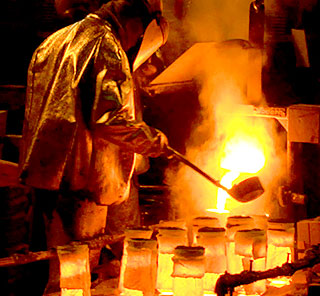Why are Stainless Steel
Castings Magnetic?
The question often arises as to why CF8M (cast 316) Stainless steel is slightly magnetic. casting users are often accustomed to the “equivalent” wrought grade which is AISI 316, which is nonmagnetic.
AISI grade 316 and ASTM grade CF8M are called austenitic Stainless steels, while grades 430 and CB-30 are called ferritic Stainless steels. They take these names from the various crystalline structures which are found in steels. Austenite is soft, ductile, and nonmagnetic. Ferrite is harder, less ductile, and magnetic. The proportions of these structures which are present in a particular steel are determined primarily by chemical analysis although other factors may need to be considered.
CB-30 and 430 are strongly magnetic because they are predominantly ferrite. AISI 316 will seldom attract a magnet because it is essentially all austenite. Grade CF8M is slightly magnetic because, while predominantly austenite, it contains normally 5 – 20 percent ferrite.
You may wonder why 316 and CF8M are so different if they are “equivalent.” Reduction or elimination of ferrite makes the Alloy easier to roll into sheet, bar, etc. Therefore, the manufacturers of wrought material have adjusted the chemical composition to provide this property. Obviously, the casting industry does not have this restriction.
Some of the advantages of having ferrite in CF8M are:
- Increased strength. The yield strength of CF8M is normally 35,000 to 45,000 psi. If the composition were adjusted to eliminate the ferrite, the yield strength could be as low as 20,000 psi.
- Increased resistance to stress corrosion cracking.
- Less severe consequences of intergranular corrosion. The chromium carbides form at the discontinuous ferrite/austenite phase boundaries rather than at the continuous austenite/austenite grain boundaries.
- Increased resistance to cracking during welding and casting.
There are some disadvantage to having ferrite in this Alloy which normally affect only those castings used in specialized applications. For example, devices using magnetic coupling must be made of nonmagnetic material, and the Navy specifies nonmagnetic materials for mine sweepers. Increased ferrite can reduce impact toughness at ultra-low temperatures (below -300 F) and after exposure to high temperatures (above 1000 F) although the latter is rare.

